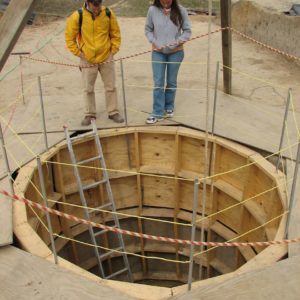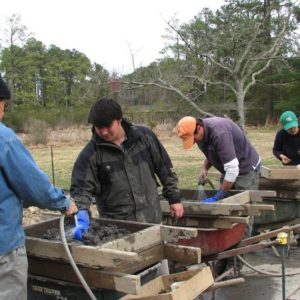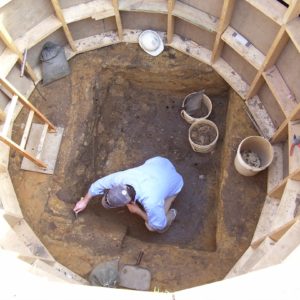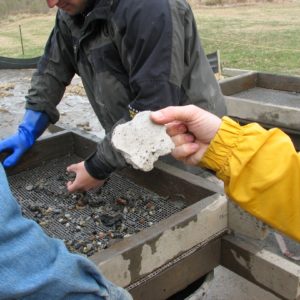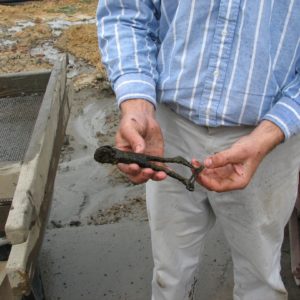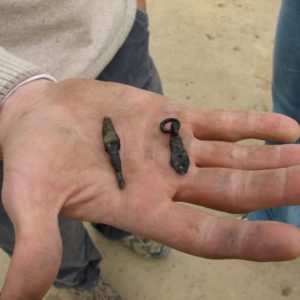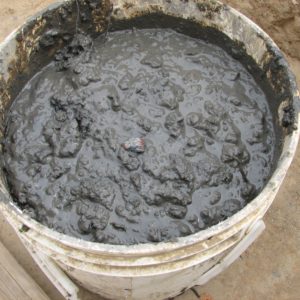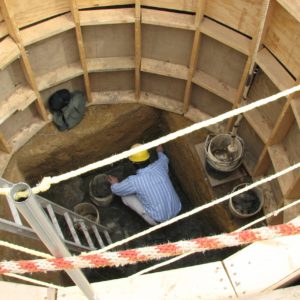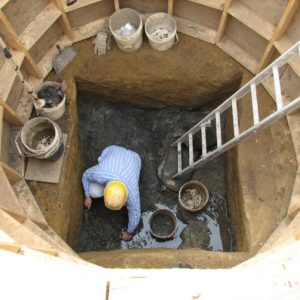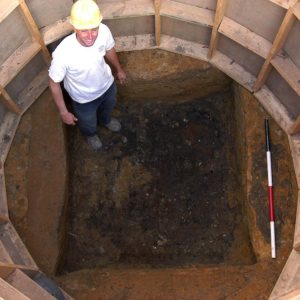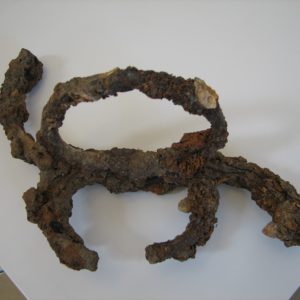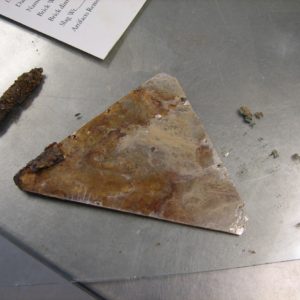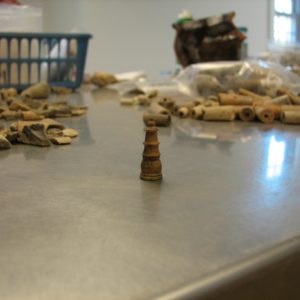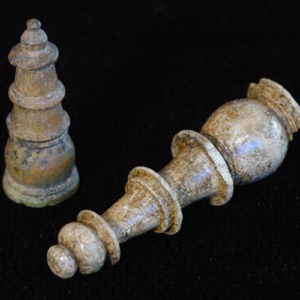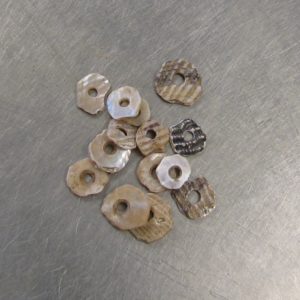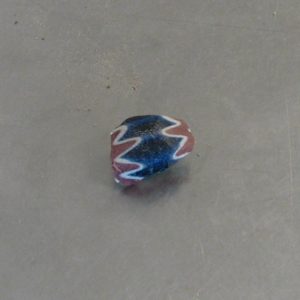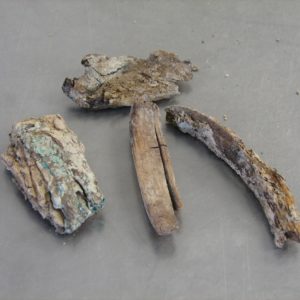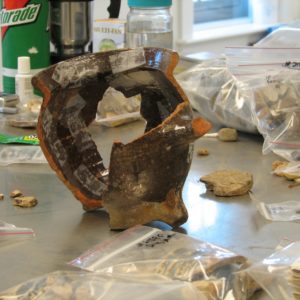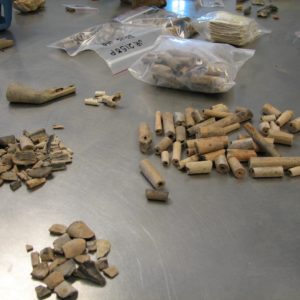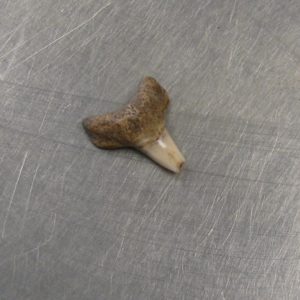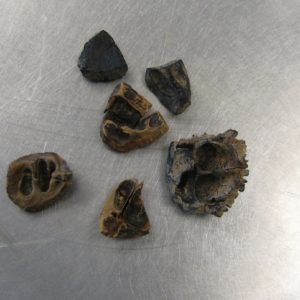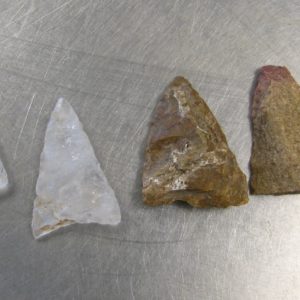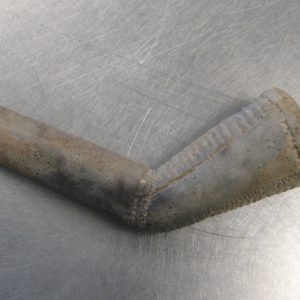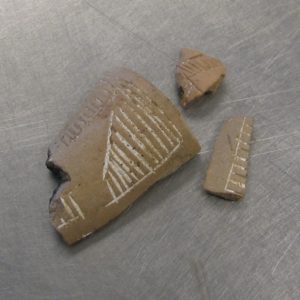Archaeologists excavating an early well near James Fort’s north bulwark have uncovered a wealth of early artifacts and have reached the water table, the depth at which the ground is completely saturated with water. The first artifacts excavated below this depth have been wonderfully preserved thanks to the unique wet environment it provides.
Before reaching the water table, the well excavations had already produced an enormous number of artifacts that tell us much about the lives of the early colonists and their Virginia Indian neighbors.
A variety of pipes have been found, with their style and color indicating examples of colonist, Virginia Indian, and European manufacture. An abundance of pipes made by Robert Cotton, Jamestown’s pipe maker, have been found in the well. Bearing his telltale diamond stamp impression, the pipes show a variety in frequency and placement of his signature maker’s mark. Several Native American pipes, adorned with intricate decoration, were also excavated from the well. Finally, fragments of white ball clay European pipes have also been found. These pipes are white and higher fired than the terra cotta Virginia-made pipes.
An iron hilt for a rapier, a sword with a long slender blade, was found in the well. Heavily rusted, yet still recognizable, the hilt will need weeks of conservation to remove the rust.
A chess piece made out of ivory was found looking little the worse for wear after having spent the last 400 years in a well.
Beads of a variety of colors, shapes and origins are among the latest artifacts to come from the well. Virginia Indian beads made out of oyster and mussel shells, as well as Venetian glass beads have been found.
Muscovy glass (today more commonly known as mica or isinglass) excavated from the well had been fashioned into triangular pieces originally used in a shipboard lantern.
The archaeologists are now progressing deeper into the saturated ground beneath the water table. Because objects in the saturated ground aren’t exposed to the air, they are often very well preserved. Metal objects being excavated now are virtually free of rust. Uncorroded copper alloy jettons (counting tokens) have maintained their original color. Metal objects, such as a number of surgeons’ tools found recently, are nearly the same dark iron color that they were when they were discarded 400 years ago. Each bucketful of mud drawn up from the well is being carefully screened as even the smallest artifacts can tell us a great deal about the people who used this well during some of the earliest years of Jamestown’s existence.
related images
- Archaeologists observe the excavations below
- Each bucketful of mud brought out of the well is carefully screened for artifacts
- Carter Hudgins nearing the water table
- Krauwinkel jetton found in the well
- A piece of shell-tempered plaster from a nearby building
- A surgical tool pulled from the well
- A tool (left) and a suspension element from a sword belt (right) just recovered from the well
- A glass chevron bead fragment found in the latest bucketful of mud
- Well excavations
- Excavating the well
- The well has a unique square shape
- Rapier hilt
- Muscovy glass (today more commonly known as mica or isinglass) excavated from the well had been fashioned into triangular pieces originally used in a ship
- Ivory chess piece
- Chess pieces
- Virginia Indian beads made out of shells
- Glass chevron bead
- Wood fragments
- Essex pipkin, a type of cooking pot
- Pipes and other artifacts from the well
- Rim of a tin-glazed earthenware drug jar
- Tin-glazed earthenware fragments
- Shark’s tooth
- Nut shells
- Projectile points
- European pipe fragments
- Virginia Indian pipe found in the well
- Virginia Indian pipe
- Pipes made by Robert Cotton, Jamestown’s pipe maker
- Virginia Indian pipe fragments
- Virginia Indian pipe fragments



